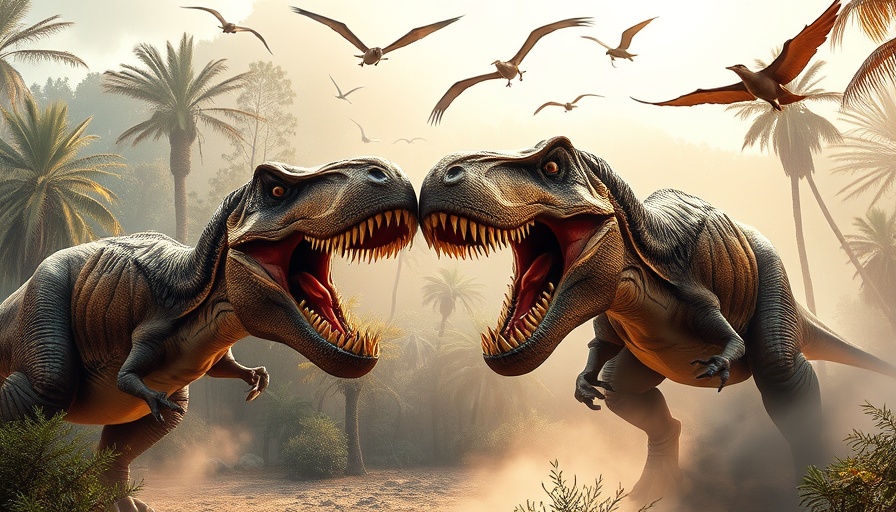
The Power of Dinosaurs: Exploring Skull Evolution
The world of dinosaurs has always been fascinating, captivating genre enthusiasts and scientific minds alike. Recent breakthroughs in paleontology demonstrate how these ancient creatures evolved different predatory strategies based on their skull designs. Research has unveiled the remarkable adaptations among giant carnivorous dinosaurs, demonstrating that biting strength was not the only determinant of their survival.
Comparative Anatomy: T. rex vs. Other Giant Dinosaurs
Traditionally, the Tyrannosaurus rex is often heralded as the quintessential carnivore. Its skull structure enables it to deliver powerful, crushing bites akin to modern crocodiles. However, findings from a recent study led by Andrew Rowe of the University of Bristol show that other bipedal giant dinosaurs, such as spinosaurs and allosaurs, opted for a different survival method. They evolved skulls designed not for sheer power but for slashing and tearing flesh, resembling a form of finesse in predation.
Highlighting Diversity in Feeding Mechanisms
This revelation about the distinct feeding strategies of these prehistoric giants challenges the traditional narrative of a single optimal skull design for carnivorous dinosaurs. The research indicates that while T. rex could overpower larger prey with its strength, spinosaurs and allosaurs adopted a method that allowed them to coexist harmoniously in their ecosystems, employing their unique strategies without engaging in fierce competition for food.
Technological Advances in Paleontology
The study's findings are buoyed by the use of modern technologies like 3D CT scans, which enable researchers to delve into skull biomechanics more extensively than ever before. These tools not only allow for accurate measurements of bite strength but also offer insights into how skull shapes could impact predatory behavior. Understanding these biomechanics offers a glimpse into how the past informs our understanding of evolution and adaptation.
Implications for Current Understanding of Evolution
With these discoveries, paleontologists gain a richer and more nuanced understanding of prehistoric life. Andrew Rowe's approach to studying the biomechanical aspects reveals that diverse evolutionary paths can exist even among creatures that share similar environmental pressures and behaviors. This insight adds layers of complexity to the evolutionary narrative of carnivorous dinosaurs.
A Connection to Today’s Ecosystems
The implications of these findings resonate today. Just as dinosaurs adapted to their environments, modern animals are continually evolving to meet ecological demands. Observing these changes can provide valuable lessons about adaptability and resilience within our own ecosystems, reflecting the diverse strategies seen in the animal kingdom.
Concluding Thoughts on Prehistoric Adaptations
In the fascinating interaction between past and present, understanding the uniqueness of giant carnivorous dinosaurs enriches our knowledge of biological diversity and evolutionary strategies. As scientists continue to unveil the mysteries of ancient life, we are reminded of the intricate dance of survival that transcends time.
Join the conversation about evolving strategies not just in dinosaurs but in today’s diverse ecosystems. Understanding our biological heritage can help us appreciate the adaptations happening right now among wildlife surrounding us.
 Add Element
Add Element  Add Row
Add Row 



Write A Comment